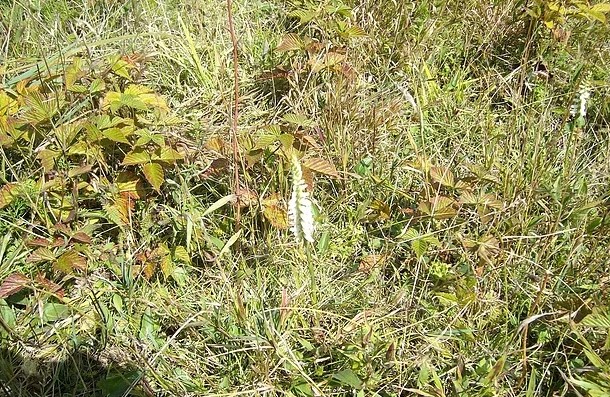Science versus Faith

All of us have our every-day grind in life. Unending daily responsibilities and commitments that you just have to plow through. But sometimes, perhaps rarely, something unexplained happens that epitomizes years, maybe decades, of your cumulative day-to-day efforts. Recently, I had one such event.
I was spot spraying invasive woodies (shrubs, small trees, brambles) in a small prairie remnant. I know this prairie intimately. Roughly a decade ago, we did the first clearing of old-growth honeysuckle and multiflora rose. And every year since, we have been fighting the resurgence of woodies with an array of counterassault management techniques. Each advancing year, more finesse is required to suppress the diminishing woodies without harming the advancing native plant species.
On this day, I have three hours available. My mind calls up a mental image of the prairie, and the day’s tasks flow out: Knock back the brambles in the ravine but avoid harming the arrow-leaved violets. The multiflora rose bushes on the east face need controlled; watch out for the pale-spiked lobelia and purple milkwort. Be careful killing the honeysuckle bushes above the rock outcropping, and avoid damaging the northern bedstraw, bastard toadflax, early buttercups. And so on.
Focused on my assignments, doing what I know, it happens. A plant pops into view that’s not in my mental image. I study the plant, momentarily torn between my work-day programming and my love of discovery. Discovery wins; I stop. I recognize the plant as an orchid, a member of the lady’s tresses family. And to my delight, there are dozens more! It’s a Great Plains lady’s tresses. The lack of basal leaves helps reveal its identity. It’s an uncommon plant found in high-quality prairies. I’m thrilled to welcome a new member to this small prairie remnant.
Finding a new plant species in a familiar area leads to reflection. These moments are the crowning reward in the life of a restoration practitioner. It exemplifies what keeps us going. We cling to faith, hoping our toiling efforts lead to discovery, and discovery will lead to more faith.
Why did this plant appear now? I might be able to lay out some clever hypothesis, but the reality is, I have no idea. As a society, we have not placed much emphasis on understanding our ecosystems, so it’s understandable why scientific knowledge is lacking.
But then, my dilemma – do I really want to know?
Originally published in Environmental Returns.
Tags: David Cordray, prairie restoration, science

